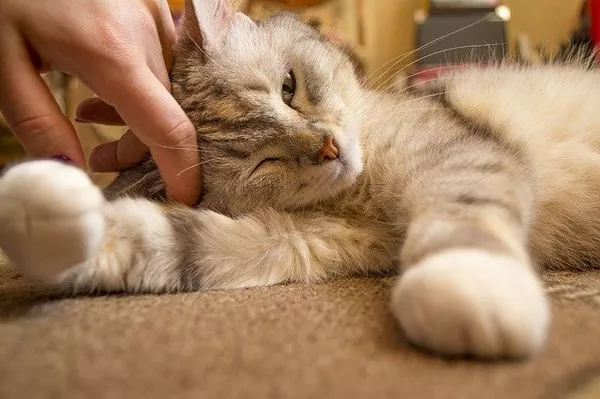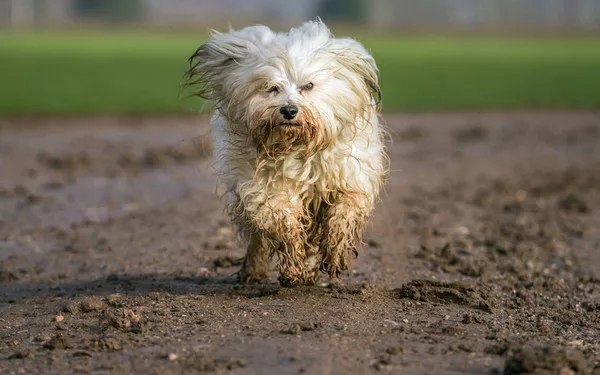In the enchanting world of feline companionship, few breeds captivate the imagination as much as the Norwegian Forest Cat. With their majestic appearance and captivating personalities, these cats have won the hearts of cat lovers around the globe. Behind their lush, semi-long fur and striking appearance lies a rich history that traces its roots back in time. In this article, we will delve into the ancestry of Norwegian Forest Cats, exploring the historical, geographical, and genetic aspects that contribute to their unique heritage.
Historical Context
The Norwegian Forest Cat, or “skogkatt” as it is known in its native Norway, has a history intertwined with Norse mythology and ancient seafaring communities. Legends and folklore depict these cats as companions to the Norse goddess Freyja, the goddess of love and fertility. It is said that these cats pulled her chariot and were believed to bring good fortune. The Norse people highly valued these cats for their prowess as hunters, keeping ships and homes free from rodents during long journeys.
As Norse seafarers explored distant lands, they brought their feline companions with them, unintentionally contributing to the spread of Norwegian Forest Cat genes. The cats adapted to diverse climates, from the harsh Scandinavian winters to the milder conditions of other regions. Over centuries, they evolved into a hardy breed, well-suited to surviving in various environments.
Geographical Influence
The geography of Norway itself has played a crucial role in shaping the characteristics of the Norwegian Forest Cat. Norway’s vast forests, mountains, and coastal areas provided an ideal habitat for these cats to thrive. Their long, water-resistant fur and tufted ears are well-adapted to the chilly climate and served as a natural shield against the elements.
The breed’s evolution was also influenced by the intermingling of cats from different regions within Norway. Cats from coastal areas may have developed stronger water-resistant coats, while those from mountainous regions may have adapted to rugged terrains. This regional variation has contributed to the diverse physical traits observed in Norwegian Forest Cats today.
Genetic Makeup
Beyond folklore and geography, modern science allows us to explore the genetic makeup of Norwegian Forest Cats, shedding light on their ancestral roots. The genetic diversity within the breed can be traced through DNA analysis, providing insights into the cat’s lineage and potential influences from other breeds.
Studies have identified genetic markers that link Norwegian Forest Cats to other Northern European breeds, such as the Siberian cat. The shared genetic heritage suggests a common ancestry and supports the idea that these breeds have evolved in parallel over the centuries. The Siberian cat, known for its thick fur and robust build, shares traits with the Norwegian Forest Cat, hinting at a shared history in the northern reaches of Europe.
Influence of Introductions and Crossbreeding
Throughout history, interactions with other cat breeds and accidental crossbreeding events have further shaped the Norwegian Forest Cat’s lineage. As seafaring cultures traded goods and explored new territories, cats from Norway may have interbred with local feline populations, leading to the introduction of new genetic elements.
In the mid-20th century, the formal recognition and preservation of the Norwegian Forest Cat as a distinct breed gained momentum. Breeders began to selectively pair cats based on their physical traits, temperament, and adherence to the breed standard. While these efforts aimed to preserve the unique characteristics of the Norwegian Forest Cat, they also inadvertently introduced new genetic influences.
The international cat fancy community played a crucial role in establishing and promoting the breed standards for Norwegian Forest Cats. Collaborative efforts across borders led to a more unified vision of the breed, ensuring that certain traits remained consistent regardless of geographic origin. The global recognition and standardization of the Norwegian Forest Cat solidified its status as a distinct and cherished breed.
Distinctive Traits and Characteristics
Norwegian Forest Cats are known for their distinctive features, which set them apart from other feline companions. These traits, honed over centuries of evolution and selective breeding, contribute to the breed’s unique charm and appeal.
1. Fur and Coat Characteristics
One of the most striking features of Norwegian Forest Cats is their luxurious, semi-long fur. This dense coat consists of a soft undercoat and longer guard hairs, providing insulation against cold weather. The water-resistant nature of their fur reflects the breed’s adaptation to Norway’s climate, allowing them to navigate wet and snowy conditions with ease.
The coat typically features a ruff of fur around the neck, tufted ears, and a bushy tail. These elements not only enhance the cat’s regal appearance but also serve practical purposes. The ruff provides additional protection for the neck, the tufted ears may aid in sound localization, and the bushy tail can offer balance and warmth.
2. Robust Build and Muscular Structure
Norwegian Forest Cats boast a sturdy and muscular build, reflecting their heritage as skilled hunters and climbers. Their strong hind legs enable them to leap great distances, while their agile bodies make them adept at navigating both forested landscapes and indoor environments. The breed’s physique is a testament to its resilience and adaptability.
3. Tufted Ears and Lynx-like Appearance
The tufted ears of Norwegian Forest Cats contribute to their lynx-like appearance, adding to their allure. This distinctive feature is not only aesthetically pleasing but may also serve functional purposes. The tufts could help protect the ears from cold and damp conditions, providing another layer of insulation.
4. Sociable and Playful Nature
Beyond physical characteristics, Norwegian Forest Cats are renowned for their friendly and sociable personalities. They form strong bonds with their human companions and are known to be good with children and other pets. Despite their regal appearance, these cats are often described as “gentle giants,” combining a majestic exterior with a warm and affectionate demeanor.
Modern Preservation Efforts
As the popularity of Norwegian Forest Cats grew, efforts to preserve the breed’s unique qualities became paramount. Cat fanciers and breeders collaborated to establish and refine breed standards, ensuring that Norwegian Forest Cats retained their distinctive characteristics. The formation of breed clubs and organizations dedicated to the preservation of the breed facilitated knowledge-sharing and provided a platform for enthusiasts to connect.
1. Breed Standards and Recognition
The establishment of breed standards plays a pivotal role in preserving the integrity of any cat breed. Breed standards define the ideal physical and temperamental characteristics of a breed, serving as a benchmark for breeders and judges in cat shows. The breed standards for Norwegian Forest Cats, developed through collaboration among international cat fancy organizations, emphasize the key traits that make the breed unique.
These standards encompass various aspects, including coat color and pattern, body structure, head shape, and eye color. Adherence to these standards ensures that Norwegian Forest Cats maintain their distinct identity across different breeding programs and geographic regions.
See Also:What Does a Norwegian Forest Cat Sound Like?
2. Genetic Testing and Health Screening
In addition to physical characteristics, the preservation of the Norwegian Forest Cat breed involves a focus on health and genetic diversity. Responsible breeders engage in genetic testing to identify and eliminate potential hereditary conditions within the breed. Regular health screenings help maintain the overall well-being of the cats, ensuring that they continue to thrive for generations to come.
3. International Collaboration and Knowledge Exchange
The global nature of the cat fancy community has been instrumental in preserving and promoting the Norwegian Forest Cat. Breeders and enthusiasts from different countries collaborate, sharing knowledge and experiences to enhance the breed’s welfare. International cat shows and events provide platforms for showcasing the best examples of the breed, fostering a sense of camaraderie among those dedicated to its preservation.
Conclusion
The Norwegian Forest Cat’s journey through time and genetics is a tale of resilience, adaptation, and the collaborative efforts of cat lovers worldwide. From its mythical origins as a companion to Norse goddesses to its role as a beloved household pet, the breed has evolved while retaining its distinctive characteristics.
As we continue to unravel the genetic threads that bind Norwegian Forest Cats to their past, it becomes clear that their history is as diverse as the landscapes they once roamed. The collaboration among breeders, the establishment of international standards, and the ongoing commitment to genetic health ensure that these majestic cats will continue to enchant and grace our homes for generations to come. The Norwegian Forest Cat stands as a living testament to the enduring bond between humans and their feline companions—a bond forged through centuries of shared history and mutual admiration.
Related Topics:
What Are the Disadvantages of a Norwegian Forest Cat?
What Are the Rarest Norwegian Forest Cat Colors?
What Color Eyes Does a Norwegian Forest Cat Have?



























